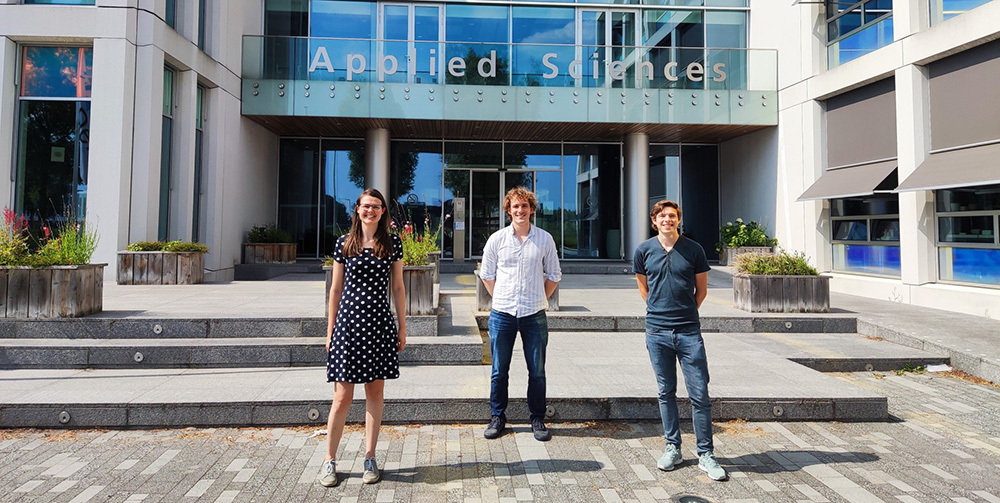Making artificial leather while processing wastewater
Leather is a strong product but has been getting bad press lately due to the fact that it is made of animal skins and the production process is a burden on the environment. The TU Delft student team WaterSkins has come up with a very sustainable alternative: artificial leather made during the treatment of wastewater.
On 21 October 2021, the WaterSkins student team’s process for the production of artificial leather won the European final of the BISC-E competition, organised by the Biobased Industries Consortium. This sustainable alternative to leather provides opportunities for making the treatment of wastewater more profitable as well as replacing part of the leather production process, which is highly polluting. The students hope to contribute to the cause of sufficient clean water worldwide in two ways like this.
Profitable water treatment
WaterSkins, the team of students comprising Gijs Arnold, Maaike Stoelinga and Casper van der Luijt, used the polymer Kaumera to create a material that looks like leather as their entry for the BISC-E competition.
After an extended process involving mixing and drying chemicals (biologically degradable ones, mind you), they were left with supple artificial leather that counts among its qualities the fact that it is non-inflammable. This artificial leather might ultimately be sold, which would make wastewater treatment financially even more attractive.
The students’ study and their lab work forms a first step in the development of a new type of sustainable artificial leather. Their work is not over yet, though: both the production process and the new material, named WaterSkins, can still be improved a lot.
Kaumera
Kaumera derived from the development of a very successful technology that originated in Delft: Nereda. This is a sustainable treatment technology for sewage water in which rather than forming floccules, the purifying, active sludge forms granules. As a result, the sludge settles much faster and more easily. The purification efficiency of the technology is very high, it takes up little space (large sludge tanks are no longer needed) and it uses relatively little energy.
The discovery of Kaumera emerged from the development of the granular sludge. Kaumera means ‘chameleon’ in Maori, the language of the original inhabitants of New Zealand, and refers to the versatility of the material. TU Delft is encouraging students and researchers to try and find possible applications for Kaumera.

